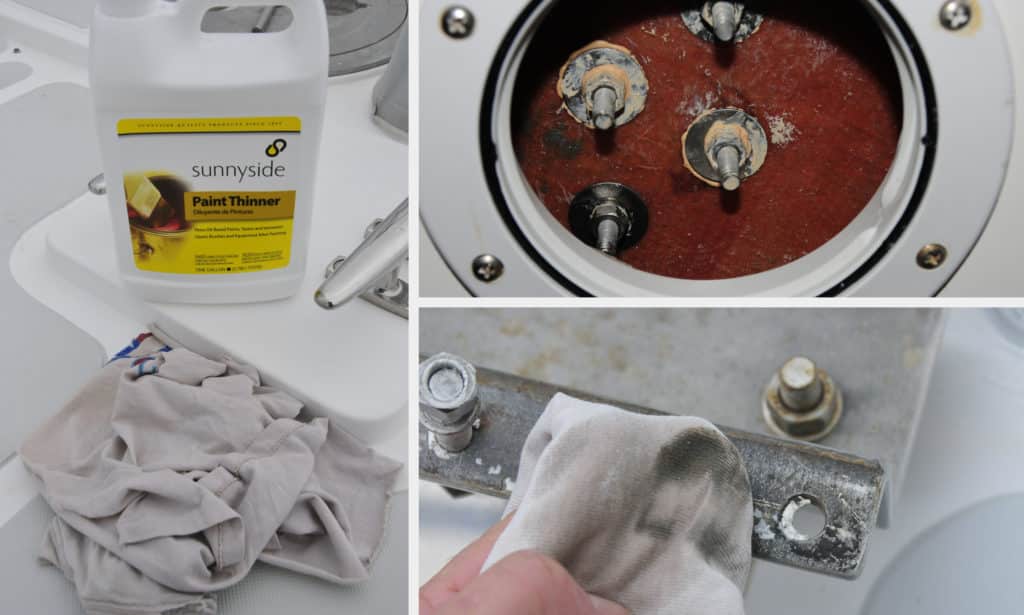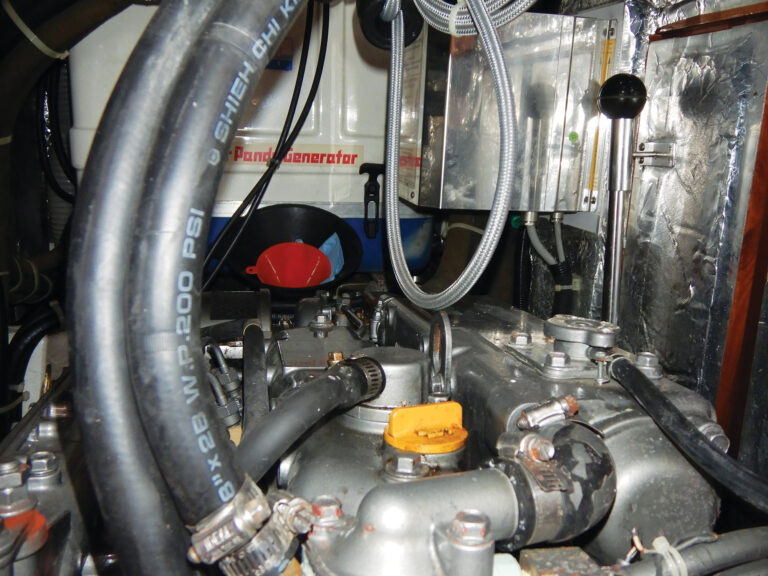
Where deck leaks are concerned, the finger is often pointed — unjustifiably — at the bedding compound. The primary culprit in these cases is actually contamination; stainless-steel, aluminum and bronze hardware and fasteners are almost always contaminated with the cutting oil used in the manufacturing process and the wax used for polishing. Both the oil and the wax work exceptionally well as release agents, preventing the necessary bond that must occur between the part to be bedded and the sealant.
The same process is at work where gelcoat surfaces are involved. New vessels, for instance, can be contaminated with mold-release wax, which allows parts to be separated from molds during the manufacturing process (construction dust will also do the dastardly deed). On vessels already in service, polishing wax can also affect gelcoat. Even oil from skin can contaminate sealing surfaces.
Happily, the solution to this problem is a simple one. The surfaces to be bedded must be thoroughly decontaminated in a process sometimes referred to as “de-waxing.” That process is not intuitive. There’s more to it than simply wiping down parts with a solvent-soaked rag. Rags are often contaminated with detergent and surfactants (the latter are chemicals that make fabric more absorbent), or by oil (even from fingertips), grease and shop dust. Therefore, only clean cotton rags or shop paper towels should be used for the task. Regardless of whether you use old T-shirts or pre-packaged bags of rags, before use, rinse them in clean water, thereby removing contaminants, and allow them to dry.
Wearing rubber gloves, wet a rag with a solvent that will evaporate completely (I prefer mineral spirits), and then wipe down the hardware, including the fasteners. You’ll notice the rag will turn black, which is evidence that wax, oil and other contaminants have been removed. Next, wet a new rag (or a different portion of the same one) with solvent and wipe down the surface to be bedded — for example, the deck or cabin top.
Apply an ample quantity of sealant to the hardware as well as to the underside of the fastener heads and shanks. The entire underside of the hardware base, not simply the area around the fastener holes, should be coated in sealant. Place the hardware on the installation surface, install fasteners, and torque evenly and fully, ensuring that sealant squeezes out around the entire perimeter.
Dock lore calls for partial torquing, then allowing sealant to cure, and then returning for final tightening days or weeks later. That approach is flawed for two reasons: First, caulk is not a gasket per se; when used in this manner and stressed in high-load scenarios, such as with stanchions and cleats, it often splits and fails. Second, there is too great a likelihood of forgetting to carry out the final torque procedure.
For deck hardware applications, do not apply sealant to any of the parts installed inside the vessel (nuts, washers and backing plates). Doing so will only retain water that leaks past the outer seal, where it can cause stainless steel to crevice-corrode while increasing the likelihood of water migration into the laminate’s core.
Masking the area around the hardware to be bedded can make cleanup easier. Remove excess caulk with a plastic scraper or tongue depressor, and then use solvent. Be sure to follow instructions carefully for this final step, as most polyurethane sealant manufacturers prohibit the use of denatured alcohol for cleanup because it can inhibit the curing process.
Steve D’Antonio offers services for boat owners and buyers through Steve D’Antonio Marine Consulting (stevedmarineconsulting.com).








